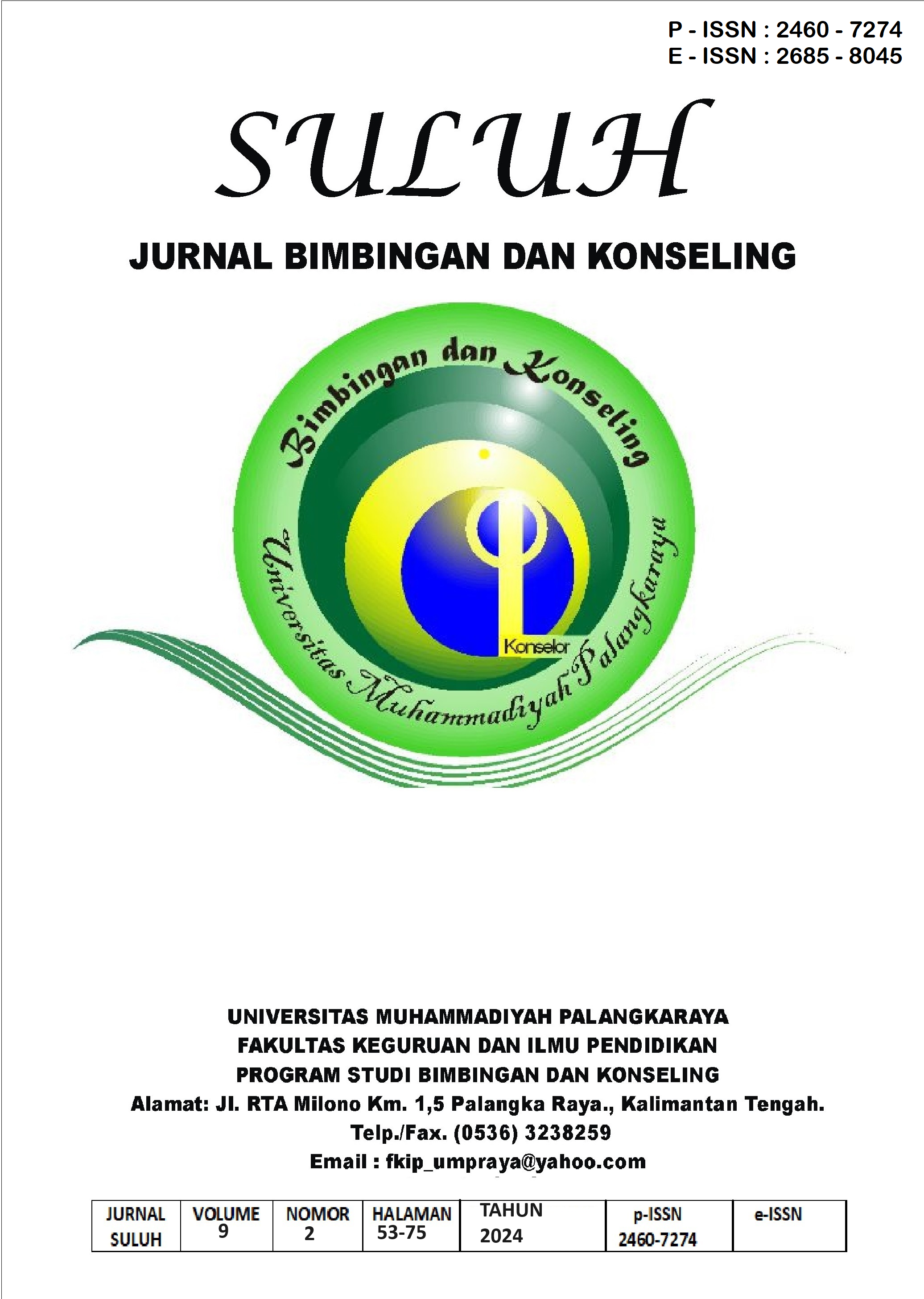Adaptation of Academic Self-Efficacy Measuring Tools using the Confirmatory Factor Analysis (CFA)
Main Article Content
Abstract
Students with higher self-efficacy, are more self-confident, can set higher learning goals, and are better at problem solving, which may lead to better academic performance. This research aims to adapt and validate The Scale of Sources of Self-efficacy in Mathematics (SSSEM) in the context of Indonesian culture and language and test its reliability in high school students. The research sample consisted of 200 students from six high schools in the city of Palangkaraya. All items were analyzed using Confirmatory Factor Analysis (CFA). The research results show the construct validity of the instrument with the index criterion value 𝜒2 = 170.749 p = 0.97 or (p-value > 0.05) meaning there is a match between the data and the model, then the RMSEA value = .028 (≤ 0.09), CMIN/DF = 1.154 (≤ 2.00), GFI = 0.920, CFI = 0.994, TLI = 0.993 and AGFI = 0897 (≥ 0.90). The results of the reliability analysis show that the scale has an adequate level of reliability. Then the construct reliability has good reliability with coefficient values for each dimension of 0.89 0.88, 0.89 and 0.87. Cronbach's Alpha value is above 0.70. This adapted scale had a good fit with empirical data after several modifications. Therefore, the Indonesian version of the SSSEM can be used as a valid and reliable measuring tool to measure self-efficacy in high school students in Indonesia.
Downloads
Article Details

This work is licensed under a Creative Commons Attribution-ShareAlike 4.0 International License.
All rights reserved. This publication may be reproduced, stored in a retrieval system, or transmitted in any form or by any means, electronic, mechanical, photocopying, recording.
References
AERA. (2018). Standards for educational and psychological testing. American Educational Research Association.
Aiken, L. R. (1985). Three Coefficients for Analyzing the Reliability and Validity of Ratings. Educational and Psychological Measurement, 45(1), 131–142. https://doi.org/10.1177/0013164485451012
Anderson, S. L., & Betz, N. E. (2001). Sources of Social Self-Efficacy Expectations: Their Measurement and Relation to Career Development. Journal of Vocational Behavior, 58(1), 98–117. https://doi.org/10.1006/jvbe.2000.1753
Bandura, A. (1997). Theoretical Perspectives: the nature of human agency. In Self-efficacy: The exercise of control (p. 3). http://search.ebscohost.com/login.aspx?direct=true&db=a9h&AN=9703260522&site=ehost-live
Beaton, D. E., Bombardier, C., Guillemin, F., & Ferraz, M. B. (2000). Guidelines for the Process of Cross-Cultural Adaptation of Self-Report Measures. Spine, 25(24), 3186–3191. https://doi.org/10.1097/00007632-200012150-00014
Cohen, J. (2012). Cohen, J. (2012). Measuring and improving school climate: A pro-social strategy that recognizes, educates and supports the whole child and the whole school community. The Handbook of Prosocial Education. Edited by P.M. Brown, M.W Corrigian and A. Higgins- (p. 26).
Farida, I. A., Suminar, D. R., & Nawangsari, N. A. F. (2018). Adaptasi Bahasa Dan Budaya Need For Cognition Scale. Jurnal Sains Psikologi, 7(2), 148–154.
Furr, R. M., & Bacharach, V. R. (2013). Psychometrics: An Introduction. SAGE Publications. https://books.google.co.id/books?id=BbwgAQAAQBAJ
Hair, J. F., Ringle, C. M., & Sarstedt, M. (2011a). PLS-SEM: Indeed a silver bullet. Journal of Marketing Theory and Practice. https://doi.org/10.2753/MTP1069-6679190202
Hair, J. F., Ringle, C. M., & Sarstedt, M. (2011b). PLS-SEM: Indeed a Silver Bullet. Journal of Marketing Theory and Practice, 19(2), 139–152. https://doi.org/10.2753/MTP1069-6679190202
Hambleton, R. K., Merenda, P. F., & Spielberger, C. D. (Eds.). (2004). Adapting Educational and Psychological Tests for Cross-Cultural Assessment. Psychology Press. https://doi.org/10.4324/9781410611758
Hampton, N. Z. (1998). Sources of Academic Self-Efficacy Scale: An assessment tool for rehabilitation counselors. In Rehabilitation Counseling Bulletin (Vol. 41, Issue 4, pp. 260–277). PRO-ED.
Heale, R., & Twycross, A. (2015). Validity and reliability in quantitative studies. Evidence Based Nursing, 18(3), 66–67. https://doi.org/10.1136/eb-2015-102129
Lent, R. W., Lopez, F. G., & Bieschke, K. J. (1991). Mathematics self-efficacy: Sources and relation to science-based career choice. Journal of Counseling Psychology, 38(4), 424–430. https://doi.org/10.1037/0022-0167.38.4.424
Usher, E. L., & Pajares, F. (2009). Sources of self-efficacy in mathematics: A validation study. Contemporary Educational Psychology, 34(1), 89–101. https://doi.org/10.1016/j.cedpsych.2008.09.002

